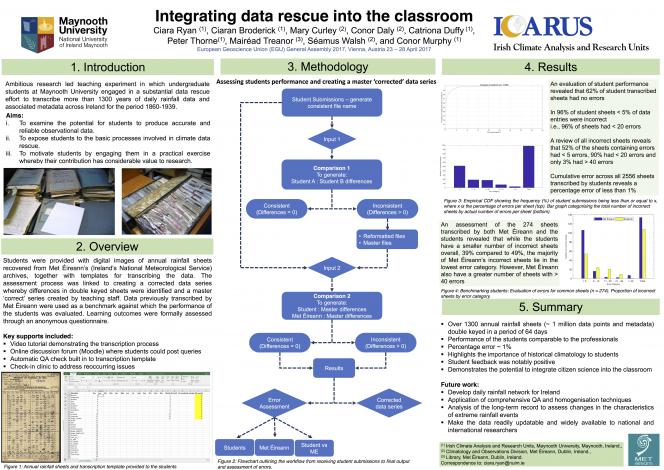Assembling high quality long-term rainfall records is a critical but often laborious task. However, it is an essential activity if we are to have the robust evidence basis from which to make smart, climate ready decisions. Historical weather records are essential for understanding climate variability and change, as well as contextualising extreme events, identifying emerging trends, evaluating climate models, and supporting vulnerability and risk assessment. In Ireland we have a rich history of weather observing. Our earliest records of rainfall can be traced to the early 1700s. By the 1850s Ireland had a relatively dense network of rain gauges across the country. Yet, our digital records, that are available for scientific scrutiny, really only extend back to the 1940s. This is a shame, as all of the early observations are held in paper format in Met Eireann's archives. Inspired by citizen science and the power of the crowd, we have come up with an ingenious solution by working together with students to transcribe these early data, make them available to science and in the process develop one of the longest continuous daily rainfall networks in the world. Our students get first had exposure of working with data, appreciation of the importance historical climatology and through classroom learning make a lasting contribution to understanding Irish climatology. Learn more about what we have done below, which we hope will be extended to other University classrooms across the world.
Our data rescue in the classroom poster was shown at the European Geosciences Union meeting in 2017. The World Meteorological Organization have highlighted this poster on their data rescue pages as an exemplar of best practices:

A pdf version of the poster is available at Data rescue poster pdf
The work was also presented as a talk at the 2017 meeting of the European Meteorological Society in Dublin. A pdf of the talk is available at Data rescue presentation . Two papers are in preparation describing the pedagogical approach and the data rescued respectively.
Lecturers from other institutions interested in finding out more about the exercise should contact Dr. Conor Murphy and Ciara Ryan for further information.
Data rescue in the classroom is but one example of the range of innovative teaching approaches we are constantly striving to develop for our BA Geography students providing the skills and insights required of successful graduates and ensuring a lasting legacy from their time at Maynooth University. Prospective students interested in the BA geography can find more information here.

